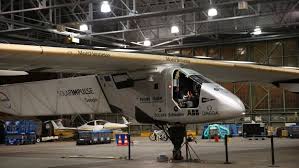
Breaking News
 Global Exclusive: The January 6th Pipe Bomber's Identity Has Been Discovered,...
Global Exclusive: The January 6th Pipe Bomber's Identity Has Been Discovered,...
 Capitol Police Officer Shauni Kerkhoff Identified as J6 Bomber...
Capitol Police Officer Shauni Kerkhoff Identified as J6 Bomber...
 Why Dual Engine Failure Changes Everything -- Louisville Crash Update
Why Dual Engine Failure Changes Everything -- Louisville Crash Update
 Transforming Storage Shelf / Workbench - Small Space Organization
Transforming Storage Shelf / Workbench - Small Space Organization
Top Tech News
 HUGE 32kWh LiFePO4 DIY Battery w/ 628Ah Cells! 90 Minute Build
HUGE 32kWh LiFePO4 DIY Battery w/ 628Ah Cells! 90 Minute Build
 What Has Bitcoin Become 17 Years After Satoshi Nakamoto Published The Whitepaper?
What Has Bitcoin Become 17 Years After Satoshi Nakamoto Published The Whitepaper?
 Japan just injected artificial blood into a human. No blood type needed. No refrigeration.
Japan just injected artificial blood into a human. No blood type needed. No refrigeration.
 The 6 Best LLM Tools To Run Models Locally
The 6 Best LLM Tools To Run Models Locally
 Testing My First Sodium-Ion Solar Battery
Testing My First Sodium-Ion Solar Battery
 A man once paralyzed from the waist down now stands on his own, not with machines or wires,...
A man once paralyzed from the waist down now stands on his own, not with machines or wires,...
 Review: Thumb-sized thermal camera turns your phone into a smart tool
Review: Thumb-sized thermal camera turns your phone into a smart tool
 Army To Bring Nuclear Microreactors To Its Bases By 2028
Army To Bring Nuclear Microreactors To Its Bases By 2028
 Nissan Says It's On Track For Solid-State Batteries That Double EV Range By 2028
Nissan Says It's On Track For Solid-State Batteries That Double EV Range By 2028
Solar Impulse Just Completed Its Momentous Flight Around the World

Sun haters, to the left. Solar Impulse 2 touched down in Abu Dhabi today, becoming the first fuel-free plane to successfully circumnavigate the globe. OK, so the 22,000-mile trip took a minute: The solar-powered bird lifted off from the same city in March 2015. But despite a few setbacks, the plane and Swiss pilot Bertrand Piccard (who took shifts with fellow flyer André Borschberg) touched down without incident.
Solar Impulse 2 is a seriously nifty machine. Its 236-foot wingspan makes it wider than a Boeing 747, but the thing is just 5,000 pounds. 17,000 rigid, photovoltaic panels charge four uber-efficient batteries, which make up nearly a third of the weight. Its four 17.4-horsepower motors definitely aren't the fastest: The plane tops out around 90 mph, and traveled at an average of 38 mph across the Pacific. (Yeah, we'd honk at it on the highway, too.)
But the slow speed didn't seem to bother Piccard and Borchberg, who used yoga, meditation, and breathing exercises to get through day-long stretches in the plane's coffin-like cockpit. Making history also seems to be worth sleeping in 20-minute spells—the pilots did that, too.
At a few points in the 17-leg journey, though, it sure looked like Solar Impulse 2 wouldn't make it. The pilots faced ugly weather over the Pacific—storms are particularly bad news for a sun-powered plane. Then the Pacific leg also fried the plane's batteries, leading to a nine-month delay. But the team sure made the best of that, raising an extra $20 million from sponsors and adding a battery cooling system. Then in May, another boo-boo: A power outage in Dayton, Ohio, deflated the plane's bespoke hangar and slightly damaged the plane. In mid-July, Piccard's upset stomach delayed the final leg between Cairo, Egypt, and Abu Dhabi. And in a final twist of irony, the sun tried sabotaging the mission. Super-hot temperatures (like, 119 degrees Fahrenheit hot) over the Saudi Arabian desert postponed the trip once again.

 Carbon based computers that run on iron
Carbon based computers that run on iron

